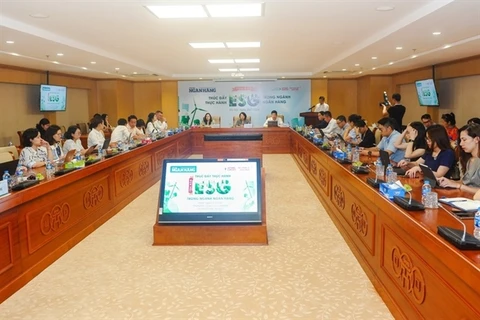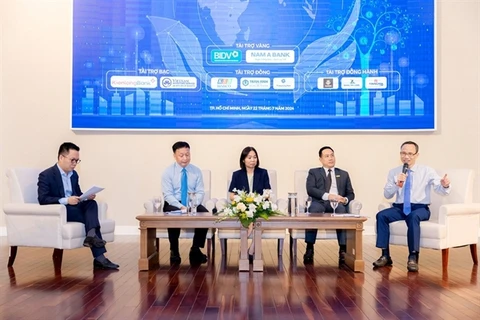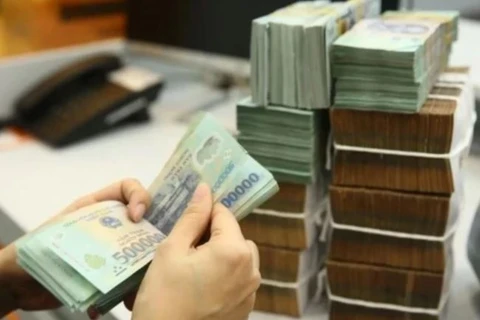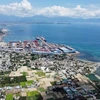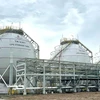
Hanoi (VNS/VNA) - Green financial capital flows in the international market are substantial and investors are highly interested in investing in Vietnam. Nevertheless, Vietnamese enterprises continue to face significant challenges in accessing this capital, experts have said.
Vo Tri Thanh, Director of the Institute for Brand and Competitiveness Strategy told a seminar on green finance development prospects held in Hanoi on August 6 that green transformation is becoming an unavoidable trend for businesses.
“Up to 80% of financial capital now requires adherence to Environmental, Social, and Governance (ESG) criteria. This requirement is not only urgent but critical. For businesses, it's not merely about survival but also about capitalising on new opportunities by adopting green practices,” Thanh said.
However, he noted that Vietnamese businesses still face several challenges in pursuing green transformation, including high conversion costs and market pressures.
Le Xuan Nghia, a member of the National Financial and Monetary Policy Advisory Council, gave an example about the 15.5 billion USD investment package provided by the Just Energy Transition Partnership (JETP) for Vietnam’s shift from fossil fuels to renewable energy. Despite this substantial support, the funds have yet to be allocated to a feasible project due to issues with legal procedures.
Nghia pointed out that while green finance is frequently discussed, its implementation remains limited.
“In practice, green credits and green bonds for wind and solar power projects often function as standard loans, subject to usual requirements such as collateral, interest rates and terms, without any special incentives or priorities,” he added.
Nghia also mentioned that the Environmental Protection Fund, managed by the Ministry of Natural Resources and Environment, currently holds 1.8 trillion VND. This fund is exclusively allocated for waste treatment projects.
However, the borrowing conditions for this package are very stringent and resemble those of standard loans, requiring collateral and adherence to credit limits. The only distinction is that the interest rate is 2% lower than the market rate, he added.
The expert said that this should not be considered a true green financial fund, as its scale does not meet Vietnam's needs for energy transformation and greenhouse gas reduction by 2030. According to World Bank estimates, Vietnam will require between 360 billion USD and 400 billion USD for this purpose.
Therefore, he suggested that State management agencies must give greater attention to this sector.
To Tran Hoa, Deputy Director of the Securities Market Development Department under the State Securities Commission (SSC), highlighted that advancing green finance is a key focus for both the SSC and the Ministry of Finance. It has been integrated into the strategy for developing the securities market by 2030.
To support businesses in transitioning and to mobilise green capital, the SSC has released handbooks on greenhouse gas emission reporting and green bond issuance.
Furthermore, through its inspection and oversight activities, the SSC ensures that green bonds are used for their intended purposes and that investors' rights are protected.
Regarding support for businesses to access green capital, Hoa said that the State Bank of Vietnam has engaged with commercial banks, which now have capital available for businesses looking to issue green bonds.
A substantial potential for growth
According to Nguyen Tung Anh, Head of Credit Research and Green Financial Services at FiinRatings, although green credit has experienced impressive growth relative to overall credit, it currently constitutes only 4.32% of total outstanding debt in the economy. This indicates significant room for expansion in the green credit sector.
Anh said currently, only two domestic green bond issuances have taken place. Following the initial green bond offerings in 2016 - amounting to 23.4 million USD and 3.6 million USD from HCM City and Ba Ria - Vung Tau, respectively - the green bond market has seen minimal development.
It wasn't until 2021 that Vietnam re-entered the green credit market, when BIM Land, the first unlisted enterprise in the country, issued 200 million USD in unsecured green bonds on the Singapore Stock Exchange (SGX).
However, the green bond market experienced a significant decline in both the number and value of issuances in 2022, he added.
To promote the domestic green financial market, he said the need for close coordination among relevant agencies to ensure the effective and consistent implementation of regulations. Additionally, enhancing the expertise and understanding of policymakers and stakeholders regarding green financial products is crucial. Creating a supportive environment for both issuers and investors is also essential to foster the growth and development of green financial projects.
Sharing the experiences in mobilising green capital from international sources, Nguyen Anh Tuan, CFO of PAN Group, said that operating in agriculture and aquaculture with a focus on exporting to Europe and the US, the company has always prioritised green transformation and sustainable development.
During the capital mobilisation process, PAN Group engaged with numerous international financial institutions.
“After reviewing and assessing the documents, these institutions provided green financial products tailored to the company's needs,” he said.
He identified two key factors for enterprises in mobilising green capital. First, proactive capital: if the enterprise meets the criteria, the capital will flow naturally. Second, the enterprise must have a solid foundation in sustainable development and governance to effectively engage with financial institutions./.
